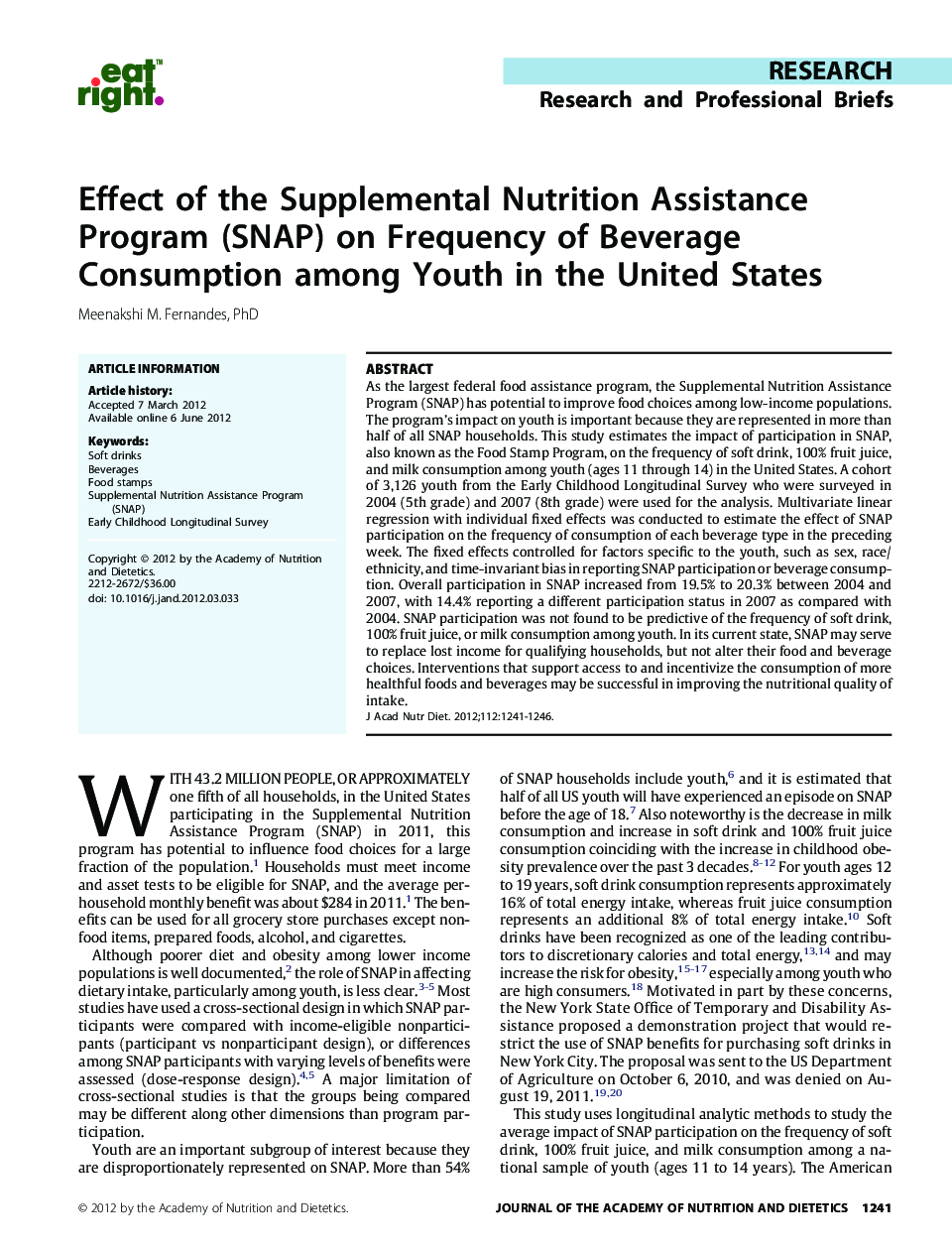| Article ID | Journal | Published Year | Pages | File Type |
|---|---|---|---|---|
| 2657036 | Journal of the Academy of Nutrition and Dietetics | 2012 | 6 Pages |
As the largest federal food assistance program, the Supplemental Nutrition Assistance Program (SNAP) has potential to improve food choices among low-income populations. The program's impact on youth is important because they are represented in more than half of all SNAP households. This study estimates the impact of participation in SNAP, also known as the Food Stamp Program, on the frequency of soft drink, 100% fruit juice, and milk consumption among youth (ages 11 through 14) in the United States. A cohort of 3,126 youth from the Early Childhood Longitudinal Survey who were surveyed in 2004 (5th grade) and 2007 (8th grade) were used for the analysis. Multivariate linear regression with individual fixed effects was conducted to estimate the effect of SNAP participation on the frequency of consumption of each beverage type in the preceding week. The fixed effects controlled for factors specific to the youth, such as sex, race/ethnicity, and time-invariant bias in reporting SNAP participation or beverage consumption. Overall participation in SNAP increased from 19.5% to 20.3% between 2004 and 2007, with 14.4% reporting a different participation status in 2007 as compared with 2004. SNAP participation was not found to be predictive of the frequency of soft drink, 100% fruit juice, or milk consumption among youth. In its current state, SNAP may serve to replace lost income for qualifying households, but not alter their food and beverage choices. Interventions that support access to and incentivize the consumption of more healthful foods and beverages may be successful in improving the nutritional quality of intake.
